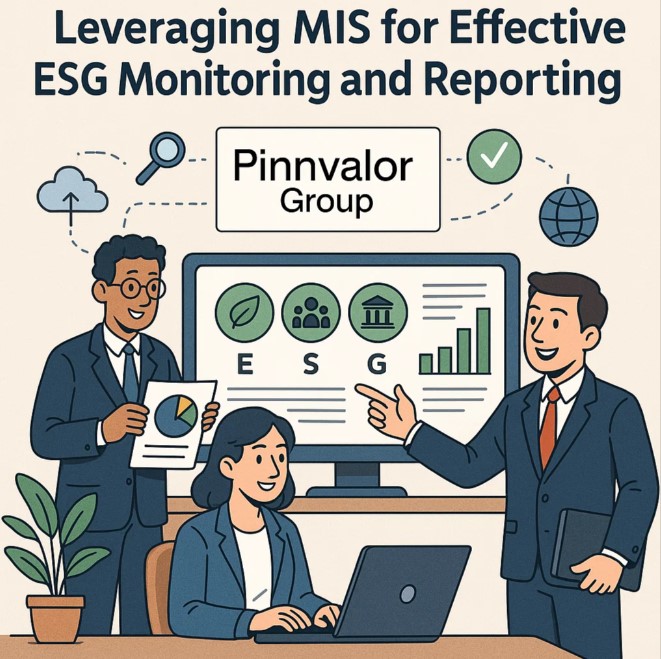
Leveraging MIS for Effective ESG Monitoring and Reporting
In today’s business environment, Environmental, Social, and Governance (ESG) factors are no longer just optional reporting items—they are critical indicators of long-term sustainability and corporate accountability. Stakeholders, investors, and regulators increasingly demand transparency in ESG performance. To meet these expectations, organizations are turning to Management Information Systems (MIS) as a powerful tool to monitor, analyze, and report ESG metrics efficiently and accurately.
Are you harnessing the power of MIS to drive transparency and efficiency in your ESG initiatives?
Transparency, accuracy, and sustainability go hand in hand. With MIS, ESG monitoring becomes smarter, faster, and more reliable. Drive your corporate responsibility with data-driven insights.
Understanding ESG Monitoring
ESG monitoring involves tracking and evaluating an organization’s performance across three dimensions:
- Environmental: Energy consumption, carbon footprint, waste management, water usage, and sustainable resource practices.
- Social: Employee welfare, diversity and inclusion, community engagement, and human rights compliance.
- Governance: Board structure, ethical practices, regulatory compliance, risk management, and transparency in decision-making.
Monitoring these parameters manually can be time-consuming and prone to errors. MIS provides an integrated approach to gather, process, and visualize ESG data in real-time, enhancing decision-making and accountability.
The Role of MIS in ESG Monitoring
Management Information Systems play a pivotal role in ESG initiatives by providing a structured platform to collect and analyze data. Key benefits include:
- Centralized Data Management: MIS allows organizations to consolidate ESG-related data from multiple departments into a single, accessible system.
- Real-time Analytics: MIS dashboards enable real-time monitoring of ESG metrics, highlighting trends, gaps, and areas of improvement.
- Enhanced Decision-making: With accurate data, management can make informed decisions to align operations with ESG goals.
- Regulatory Compliance: MIS ensures organizations can easily track compliance with local and international ESG regulations and reporting standards.
- Stakeholder Transparency: MIS-generated reports provide clear, verifiable insights to investors, customers, and other stakeholders.
Key Features of an ESG-Focused MIS
To maximize ESG monitoring effectiveness, an MIS should include the following features:
- Automated Data Collection: Integration with IoT devices, HR systems, financial systems, and environmental monitoring tools for seamless data capture.
- Customizable Dashboards: Tailored visualizations for different stakeholders, highlighting key ESG KPIs.
- Data Validation and Accuracy Checks: Ensures reliable reporting by identifying discrepancies or anomalies in data.
- Reporting and Compliance Modules: Prepares reports aligned with global ESG frameworks such as GRI, SASB, or TCFD.
- Predictive Analytics: Uses historical data and AI algorithms to forecast ESG risks and opportunities.

Implementing MIS for ESG Monitoring
Successful implementation of MIS for ESG monitoring requires a systematic approach:
- Identify ESG Metrics: Define measurable indicators relevant to your industry and organizational goals.
- Integrate Systems: Connect existing operational, financial, and HR systems with the MIS for automated data collection.
- Train Employees: Equip teams with the knowledge to input, analyze, and interpret ESG data effectively.
- Develop Dashboards: Create interactive dashboards that provide actionable insights for management and stakeholders.
- Continuous Monitoring and Feedback: Regularly review ESG performance and adjust strategies based on MIS insights.
Benefits of Leveraging MIS for ESG
When effectively utilized, MIS provides organizations with multiple advantages:
- Efficiency: Streamlines data collection and reporting, saving time and reducing errors.
- Transparency: Ensures stakeholders receive accurate, timely, and comprehensible ESG reports.
- Risk Mitigation: Identifies potential ESG risks before they escalate into compliance or reputational issues.
- Strategic Planning: Supports long-term sustainability strategies through data-driven insights.
- Enhanced Reputation: Demonstrates a commitment to ESG principles, strengthening trust among investors and customers.
Conclusion
As ESG considerations become central to business strategy, leveraging MIS for effective monitoring and reporting is no longer optional—it is essential. By integrating MIS into ESG initiatives, organizations can ensure accurate data collection, informed decision-making, and transparent reporting. Ultimately, this not only strengthens regulatory compliance but also drives sustainable growth and builds stakeholder confidence.
